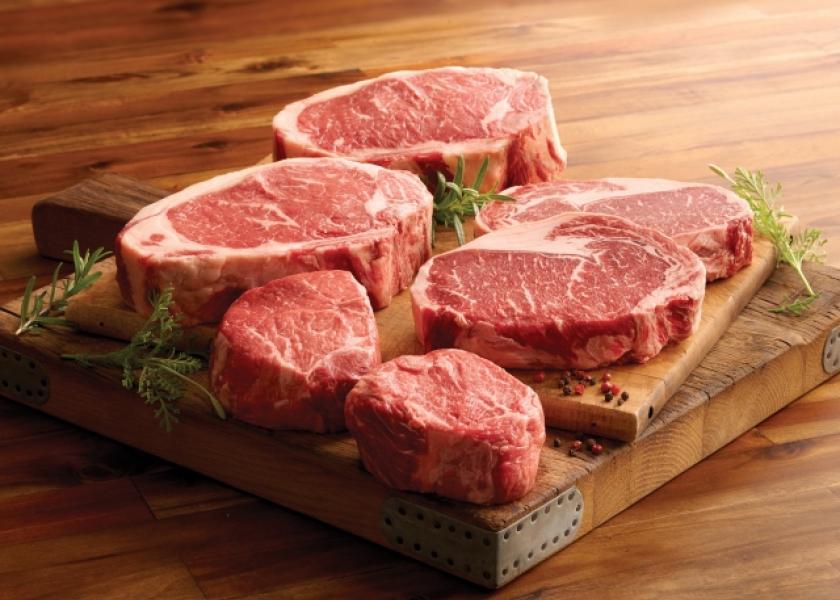Wholesale Beef Volatility Signals Ongoing Leverage Shift

Cattle feeders have experienced a $6 per cwt. price increase since the first week of November, with asking prices this week at many yards at $160. The gains are a reflection of tighter fed cattle supplies which have provided cattle feeders with market leverage they haven’t seen in years.
The past month has also produced some of the most intense volatility for wholesale beef prices on record. Monday’s (Dec-12) Choice boxed beef cutout closed at $257.02 per cwt., representing a one-day gain of $8.09 per cwt. Monday’s close was also $13.71 per cwt. higher than the previous Monday (Dec-5). (USDA’s Agricultural Marketing Service reports negotiated boxed beef prices twice daily – at 9:30 AM and 1:30 PM. Tuesday morning’s Choice boxed beef was reported at $260.33 per cwt., another $3.31 higher than Monday’s close.)
Monday’s close was 3% higher, which is extreme. For perspective, a 750-point rally for the Dow Jones Industrial average represents about a 2% gain for stocks.
While the recent volatility in wholesale beef prices is extreme, analysts note there are seasonal effects at play along with the reduced slaughter numbers.
Processors and retailers try to manage their schedules and their beef supplies before and after shortened holiday production weeks. Recent volatility in wholesale pork prices were even more extreme than for beef.
Altin Kalo, Steiner Consulting Group senior economist, noted that the Monday before Thanksgiving the pork cutout was at $92 per cwt., then dropped to $86 per cwt. a few days later, increased to as high as $90/cwt a couple of days after that, then closed on Dec. 7 slightly over $84 per cwt.
Thursday of last week (Dec 7) saw the Choice beef cutout increase $6 per cwt., or 2.6%. “Some of these moves are due to holiday effects, with products such as beef ribs impacted by the coming holiday features and retailer position,” Kalo said.
Thursday’s price spike was due mainly to a 12% jump in the rib primal, Kalo noted. Previously the rib primal had dropped 11% during the previous four days, “possibly as a major seller had to get cleaned up but then prices were back up to where they were a year ago once the spot market was cleaned up,” Kalo said.
Seasonally, a decline in high value steak cuts – rib primals – is expected once holiday needs are covered, and a shift by retailers to less expensive beef cuts has helped support wholesale beef prices.
“Last year both the chuck and round primal rallied about 20% from mid-December to mid-January and that rally added $21/cwt to the value of the cutout,” Kalo said. “For now round and chuck prices remain under pressure” but there is still time for the seasonal change.
Volatility in wholesale beef prices comes at a time when packers are forced to pay higher prices for cattle, resulting in significant margin suppression. Multiple market analysts, including the Sterling Beef Profit Tracker, estimate packer losses are the highest in seven years at between $75 and $140 per head.
Those losses have not hurt packers’ appetite for market-ready cattle so far, but analysts believe that could change as supplies tighten further in the new year and if demand from retailers begins to suffer with softening consumer demand.







